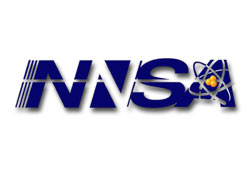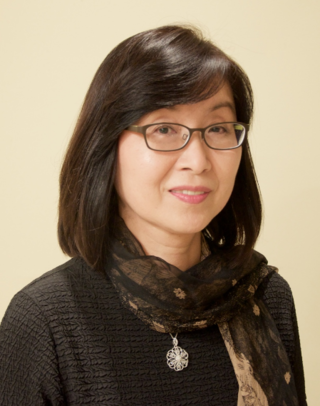Related Research Articles
Lawrence Livermore National Laboratory (LLNL) is a federally funded research and development center in Livermore, California, United States. Originally established in 1952, the laboratory now is sponsored by the United States Department of Energy and administrated by Lawrence Livermore National Security, LLC.

Scientific visualization is an interdisciplinary branch of science concerned with the visualization of scientific phenomena. It is also considered a subset of computer graphics, a branch of computer science. The purpose of scientific visualization is to graphically illustrate scientific data to enable scientists to understand, illustrate, and glean insight from their data. Research into how people read and misread various types of visualizations is helping to determine what types and features of visualizations are most understandable and effective in conveying information.

The Advanced Simulation and Computing Program is a super-computing program run by the National Nuclear Security Administration, in order to simulate, test, and maintain the United States nuclear stockpile. The program was created in 1995 in order to support the Stockpile Stewardship Program. The goal of the initiative is to extend the lifetime of the current aging stockpile.

The Courant Institute of Mathematical Sciences is the mathematics research school of New York University (NYU), and is among the most prestigious mathematics schools and mathematical sciences research centers in the world. Founded in 1935, it is named after Richard Courant, one of the founders of the Courant Institute and also a mathematics professor at New York University from 1936 to 1972, and serves as a center for research and advanced training in computer science and mathematics. It is located on Gould Plaza next to the Stern School of Business and the economics department of the College of Arts and Science.

The National Energy Research Scientific Computing Center (NERSC), is a high-performance computing (supercomputer) National User Facility operated by Lawrence Berkeley National Laboratory for the United States Department of Energy Office of Science. As the mission computing center for the Office of Science, NERSC houses high performance computing and data systems used by 9,000 scientists at national laboratories and universities around the country. Research at NERSC is focused on fundamental and applied research in energy efficiency, storage, and generation; Earth systems science, and understanding of fundamental forces of nature and the universe. The largest research areas are in High Energy Physics, Materials Science, Chemical Sciences, Climate and Environmental Sciences, Nuclear Physics, and Fusion Energy research. NERSC's newest and largest supercomputer is Perlmutter, which debuted in 2021 ranked 5th on the TOP500 list of world's fastest supercomputers.
High Performance Storage System (HPSS) is a flexible, scalable, policy-based, software-defined Hierarchical Storage Management product developed by the HPSS Collaboration. It provides scalable hierarchical storage management (HSM), archive, and file system services using cluster, LAN and SAN technologies to aggregate the capacity and performance of many computers, disks, disk systems, tape drives, and tape libraries.
Margaret H. Wright is an American computer scientist and mathematician. She is a Silver Professor of Computer Science and former Chair of the Computer Science department at Courant Institute of Mathematical Sciences, New York University, with research interests in optimization, linear algebra, and scientific computing. She was elected to the National Academy of Engineering in 1997 for development of numerical optimization algorithms and for leadership in the applied mathematics community. She was elected to the National Academy of Sciences in 2005. She was the first woman to serve as President of the Society for Industrial and Applied Mathematics.
The SIAM Journal on Scientific Computing (SISC), formerly SIAM Journal on Scientific & Statistical Computing, is a scientific journal focusing on the research articles on numerical methods and techniques for scientific computation. It is published by the Society for Industrial and Applied Mathematics (SIAM). Hans De Sterck is the current editor-in-chief, assuming the role in January 2022. The impact factor is currently around 2.

Phillip Colella is an American applied mathematician and a member of the Applied Numerical Algorithms Group at the Lawrence Berkeley National Laboratory. He has also worked at Lawrence Livermore National Laboratory. He is known for his fundamental contributions in the development of mathematical methods and numerical tools used to solve partial differential equations, including high-resolution and adaptive mesh refinement schemes. Colella is a member of the US National Academy of Sciences.
John B. Bell is an American mathematician and the Chief Scientist of the Computational Research Division at the Lawrence Berkeley National Laboratory. He has made contributions in the areas of finite difference methods, numerical methods for low Mach number flows, adaptive mesh refinement, interface tracking and parallel computing. He has also worked on the application of these numerical methods to problems from a broad range of fields, including combustion, shock physics, seismology, flow in porous media and astrophysics.

James Weldon Demmel Jr. is an American mathematician and computer scientist, the Dr. Richard Carl Dehmel Distinguished Professor of Mathematics and Computer Science at the University of California, Berkeley.

Katherine "Kathy" Anne Yelick, an American computer scientist, is the vice chancellor for research and the Robert S. Pepper Professor of Electrical Engineering and Computer Sciences at the University of California, Berkeley. She is also a faculty scientist at Lawrence Berkeley National Laboratory, where she was Associate Laboratory Director for Computing Sciences from 2010-2019.
Marsha J. Berger is an American computer scientist. Her areas of research include numerical analysis, computational fluid dynamics, and high-performance parallel computing. She is a Silver Professor (emeritus) of Computer Science and Mathematics in the Courant Institute of Mathematical Sciences of New York University. She is Group Leader of Modeling and Simulation in the Center for Computational Mathematics at the Flatiron Institute.

Haesun Park is a professor and chair of Computational Science and Engineering at the Georgia Institute of Technology. She is an IEEE Fellow, ACM Fellow, and Society for Industrial and Applied Mathematics Fellow. Park's main areas of research are Numerical Algorithms, Data Analysis, Visual Analytics and Parallel Computing. She has co-authored over 100 articles in peer-reviewed journals and conferences.
Ann S. Almgren is an American applied mathematician who works as a senior scientist and group leader of the Center for Computational Sciences and Engineering at the Lawrence Berkeley National Laboratory. Her primary research interests are in computational algorithms for solving PDE's for fluid dynamics in a variety of application areas. Her current projects include the development and implementation of new multiphysics algorithms in high-resolution adaptive mesh codes that are designed for the latest multicore architectures.
Carol San Soucie Woodward is an American computational mathematician who works in the Center for Applied Scientific Computing at Lawrence Livermore National Laboratory. She was elected as a fellow of the Society for Industrial and Applied Mathematics (SIAM) in 2017, "for the development and application of numerical algorithms and software for large-scale simulations of complex physical phenomena".
Tamara G. Kolda is an American applied mathematician and former Distinguished Member of Technical Staff at Sandia National Laboratories. She is noted for her contributions in computational science, multilinear algebra, data mining, graph algorithms, mathematical optimization, parallel computing, and software engineering. She is currently a member of the SIAM Board of Trustees and served as associate editor for both the SIAM Journal on Scientific Computing and the SIAM Journal on Matrix Analysis and Applications.
Edmond Chow is a full professor in the School of Computational Science and Engineering of Georgia Institute of Technology. His main areas of research are in designing numerical methods for high-performance computing and applying these methods to solve large-scale scientific computing problems.

Dawn Angela Shaughnessy is an American radiochemist and principal investigator of the heavy element group at the Lawrence Livermore National Laboratory. She was involved in the discovery of five superheavy elements with atomic numbers 114 to 118.
Ulrike Meier Yang is a German-American applied mathematician and computer scientist specializing in numerical algorithms for scientific computing. She directs the Mathematical Algorithms & Computing group in the Center for Applied Scientific Computing at the Lawrence Livermore National Laboratory, and is one of the developers of the Hypre library of parallel methods for solving linear systems.
References
- 1 2 3 "Chandrika Kamath", People, Lawrence Livermore National Laboratory, retrieved 2023-04-08
- 1 2 LLNL's Kamath honored as 2023 SIAM fellow, Lawrence Livermore National Laboratory, March 30, 2023, retrieved 2023-04-08
- ↑ Parker, Ann (October 2006), "A gem of a software tool" (PDF), 2006 R&D 100 Awards, Science & Technology Review, Lawrence Livermore National Laboratory, pp. 10–11, retrieved 2023-04-08
- ↑ "Editorial board", Statistical Analysis and Data Mining, Wiley, retrieved 2023-04-08
- ↑ Reviews of Scientific Data Mining: Ray Kresman, JASA, JSTOR 27920156; Sang Ho Lee, Zbl 1168.68011; Antony Unwin, Biometrical J., doi:10.1002/bimj.201000091
- ↑ "SIAM Announces Class of 2023 Fellows", SIAM News, SIAM, March 30, 2023, retrieved 2023-04-08